Clarissa Brincat in Scientific American:
 Do you think women are more invested in romance than men? Rom-coms and women’s magazines may push this stereotype, but psychological research is increasingly telling a different story: multiple studies have suggested that men may actually place a greater importance on romantic relationships. Now researchers have identified a key behavioral factor that explains this surprising difference.
Do you think women are more invested in romance than men? Rom-coms and women’s magazines may push this stereotype, but psychological research is increasingly telling a different story: multiple studies have suggested that men may actually place a greater importance on romantic relationships. Now researchers have identified a key behavioral factor that explains this surprising difference.
Drawing on more than 50 studies of mixed-gender relationships, researchers at Humboldt University of Berlin, the University of Minnesota and Vrije University Amsterdam proposed that men, compared with women, expect to gain more from being in a romantic relationship and are thus more motivated to find a partner. According to multiple anonymous surveys, men also tend to experience greater mental and physical health benefits from being in a relationship, are less likely to initiate breakups and struggle more with the emotional toll of a breakup, the researchers wrote in Behavioral and Brain Sciences.
Elaine Hoan, who studies social psychology at the University of Toronto, says these observations align with a trend she has seen in her own research: “that single men are typically less happy with their singlehood than single women, even across different Western and Eastern cultural contexts.”
More here.
Enjoying the content on 3QD? Help keep us going by donating now.

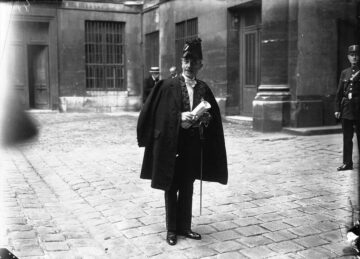 Valéry said we see only through effort after we see for the first time. This is its own sort of trauma. We repeat the seashore of our youth until we die. Yeats did too, with his Irish myths and hopeless love for Maud, his Symbolist trappings and occult obsessions, and all the insecurities of the accomplished autodidact (he once failed to get a teaching job at Trinity College because he couldn’t spell “professor”), but there is a point when we realize art can take us further: It can let us see everything. It is the effort that changes utterly. Owen grasped this as well as Yeats.
Valéry said we see only through effort after we see for the first time. This is its own sort of trauma. We repeat the seashore of our youth until we die. Yeats did too, with his Irish myths and hopeless love for Maud, his Symbolist trappings and occult obsessions, and all the insecurities of the accomplished autodidact (he once failed to get a teaching job at Trinity College because he couldn’t spell “professor”), but there is a point when we realize art can take us further: It can let us see everything. It is the effort that changes utterly. Owen grasped this as well as Yeats.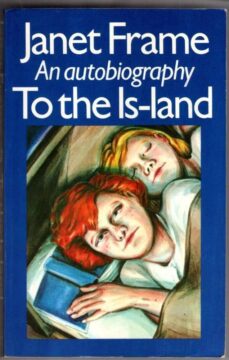 “The Edge of the Alphabet” is the third in a sequence of novels published after Frame left the hospital, following “
“The Edge of the Alphabet” is the third in a sequence of novels published after Frame left the hospital, following “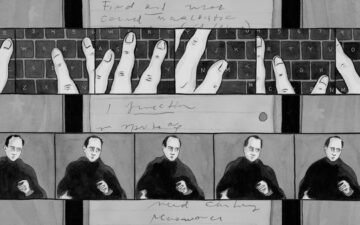 In 2020, the musician and artist Laurie Anderson used a corpus of writing and lyrics from her late husband, Velvet Underground’s co-founder Lou Reed, to create a generative program she interacted with as a creative collaborator. And in 2021, the journalist James Vlahos launched HereAfter AI, an app anyone can use to create interactive chatbots, called ‘life story avatars’, that are based on loved ones’ memories. Today, enterprises in the business of ‘reinventing remembrance’ abound: Life Story AI, Project Infinite Life, Project December – the list
In 2020, the musician and artist Laurie Anderson used a corpus of writing and lyrics from her late husband, Velvet Underground’s co-founder Lou Reed, to create a generative program she interacted with as a creative collaborator. And in 2021, the journalist James Vlahos launched HereAfter AI, an app anyone can use to create interactive chatbots, called ‘life story avatars’, that are based on loved ones’ memories. Today, enterprises in the business of ‘reinventing remembrance’ abound: Life Story AI, Project Infinite Life, Project December – the list  The women’s and gay liberation movements of the 1960s and 70s inspired the first professional historians of sexuality. Many of them specialized in the modern histories of Europe and the United States, and they theorized mainly from the modern Western experience. This is beginning to change: the field has expanded to incorporate premodern histories and histories in all regions of the world, becoming increasingly transhistorical and global.
The women’s and gay liberation movements of the 1960s and 70s inspired the first professional historians of sexuality. Many of them specialized in the modern histories of Europe and the United States, and they theorized mainly from the modern Western experience. This is beginning to change: the field has expanded to incorporate premodern histories and histories in all regions of the world, becoming increasingly transhistorical and global. With his unprecedented effort to push the limits of executive power,
With his unprecedented effort to push the limits of executive power, 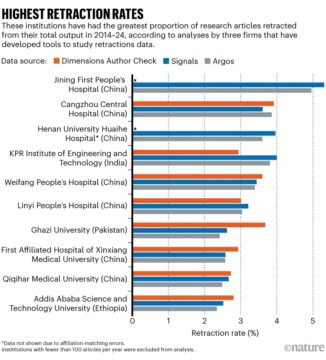 Data on retractions show that they are rare events. Out of 50 million or more articles published over the past decade, for instance, a mere 40,000 or so (fewer than 0.1%) have been retracted, according to the firms’ data sets. But the rise in retraction notices (by which journals announce that a paper is being retracted) is outstripping the growth of published papers — partly because of the rise of paper mills and the growing number of sleuths who spot problems with published articles.
Data on retractions show that they are rare events. Out of 50 million or more articles published over the past decade, for instance, a mere 40,000 or so (fewer than 0.1%) have been retracted, according to the firms’ data sets. But the rise in retraction notices (by which journals announce that a paper is being retracted) is outstripping the growth of published papers — partly because of the rise of paper mills and the growing number of sleuths who spot problems with published articles. Before Althea Gibson could play — much less win — major tennis tournaments, another opponent had to be defeated. But Gibson had less control against this foe, which went by the name segregation. Jackie Robinson played in the major leagues (1947) before a black was permitted to play tennis at the U.S. National Championships. But cracks soon developed in the lily-white sport. And finally, in 1950, when Gibson was 23 years old, she was permitted to play at the U.S. Nationals, becoming the first black to compete in the tournament.
Before Althea Gibson could play — much less win — major tennis tournaments, another opponent had to be defeated. But Gibson had less control against this foe, which went by the name segregation. Jackie Robinson played in the major leagues (1947) before a black was permitted to play tennis at the U.S. National Championships. But cracks soon developed in the lily-white sport. And finally, in 1950, when Gibson was 23 years old, she was permitted to play at the U.S. Nationals, becoming the first black to compete in the tournament.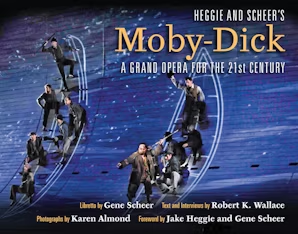 When the composer, Jake Heggie, said to the Dallas Opera, “We want to do Moby-Dick,” the artistic director Jonathan Pell asked, “Is there anything else you’d like to do?” So, yes. It was a daunting prospect, and it took a long time to figure out a way into it. For the first six months of the process, I just read and reread the book, which I hadn’t done since high school—and back then I probably skipped some chapters. I was also reading criticism about it. I was concerned not just with how to cut it down but also with how to really adapt it for the stage. The nature of Moby-Dick, or any novel, is that it’s telling a story. The narrator is very prominent. In the theater, we’re in the business of showing a story. Rather than what the characters are saying, it’s a question of what they’re doing and how the action can bring life to the story. But I could also see the possibilities immediately for the adaptation. There’s so much about Moby-Dick that is operatic—the language, the themes, and the power of the story. Throughout the book, there are these dramatic, incredibly poetic passages that I could imagine being sung, especially if they were distilled down. And the thing about Moby-Dick is that while it is a very long book and one that’s deep and dense, it does have a very compelling adventure story at the center of it. I knew we could exploit that.
When the composer, Jake Heggie, said to the Dallas Opera, “We want to do Moby-Dick,” the artistic director Jonathan Pell asked, “Is there anything else you’d like to do?” So, yes. It was a daunting prospect, and it took a long time to figure out a way into it. For the first six months of the process, I just read and reread the book, which I hadn’t done since high school—and back then I probably skipped some chapters. I was also reading criticism about it. I was concerned not just with how to cut it down but also with how to really adapt it for the stage. The nature of Moby-Dick, or any novel, is that it’s telling a story. The narrator is very prominent. In the theater, we’re in the business of showing a story. Rather than what the characters are saying, it’s a question of what they’re doing and how the action can bring life to the story. But I could also see the possibilities immediately for the adaptation. There’s so much about Moby-Dick that is operatic—the language, the themes, and the power of the story. Throughout the book, there are these dramatic, incredibly poetic passages that I could imagine being sung, especially if they were distilled down. And the thing about Moby-Dick is that while it is a very long book and one that’s deep and dense, it does have a very compelling adventure story at the center of it. I knew we could exploit that. Norman Lewis (1908–2003) was arguably the finest English travel writer of his generation. Other contenders for the title – Robert Byron, Peter Fleming, Graham Greene, Evelyn Waugh, say – were all Oxford-educated, but Lewis was a product of Enfield’s grammar school and its public library. A devotee of the classics – Herodotus, Suetonius, Chekhov, Turgenev – he was attracted southwards. Federico García Lorca was his favourite poet. He gracefully reconfigured his first book, Spanish Adventure, written at twenty-six, into his last book, The Tomb in Seville, at the age of ninety-four. Just as a matador conceals his sword behind a bright muleta cape, he masked a tragic sensibility with a comic style.
Norman Lewis (1908–2003) was arguably the finest English travel writer of his generation. Other contenders for the title – Robert Byron, Peter Fleming, Graham Greene, Evelyn Waugh, say – were all Oxford-educated, but Lewis was a product of Enfield’s grammar school and its public library. A devotee of the classics – Herodotus, Suetonius, Chekhov, Turgenev – he was attracted southwards. Federico García Lorca was his favourite poet. He gracefully reconfigured his first book, Spanish Adventure, written at twenty-six, into his last book, The Tomb in Seville, at the age of ninety-four. Just as a matador conceals his sword behind a bright muleta cape, he masked a tragic sensibility with a comic style. The jewelry designer Lola Oladunjoye remembers that she was sketching in the studio of her Paris apartment one day in late May 2020. She looked up at the television and, on CNN, watched in horror a video of George Floyd being fatally restrained
The jewelry designer Lola Oladunjoye remembers that she was sketching in the studio of her Paris apartment one day in late May 2020. She looked up at the television and, on CNN, watched in horror a video of George Floyd being fatally restrained